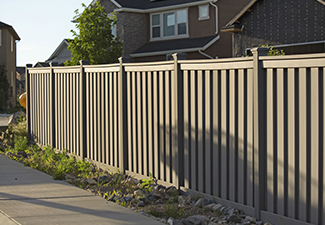Understanding California’s Property Line and Fence Laws
March 22, 2022
 With homes being built closer and closer to each other in California because of soaring land values, neighbors are becoming ever more mindful of boundary lines and privacy rights, including the construction and maintenance of fences and trees that overhang an adjoining property.
With homes being built closer and closer to each other in California because of soaring land values, neighbors are becoming ever more mindful of boundary lines and privacy rights, including the construction and maintenance of fences and trees that overhang an adjoining property.
Who is responsible for erecting and maintaining fences? What can you do if a fence appears to violate the boundary line between you and a neighbor? What can you do if the branches of a neighbor’s tree jut into your property or its roots appear in your soil?
Fortunately, California law is pretty clear on all these subjects, but that doesn’t prevent disputes from arising between neighbors that can escalate into verbal and sometimes even legal battles. The last thing anyone wants is to have a neighbor with whom you’re constantly feuding.
If you’re facing fencing, tree, or boundary issues in Laguna Hills, California, or anywhere throughout the counties of Orange, Los Angeles, Riverside, San Bernardino, and San Diego, contact J. Eric LeVine, ESQ.
I have been helping clients solve real estate disputes for more than four decades, and I can help you protect your rights and resolve your issue in the best available way.
California’s Fence and Tree Law
When it comes to fence construction and maintenance, California law is clear that a fence mutually benefits both parties. This means that construction and maintenance costs should be shared between the adjoining property owners. This doesn’t mean, of course, that one neighbor may never accuse the other of causing damage to the fence and thus demand they pay for repairs.
The law requires an owner who wants to build or repair a fence to give 30 days’ notice to the neighbor and provide the neighbor with an estimate of the costs involved.
California law also has a statute concerning spite fences. A spite fence is built at least ten feet high, regardless of the construction material – which can even be bushes – that is solely meant to annoy a neighbor. The neighbor can then sue for a privacy nuisance.
When it comes to trees and their overhanging branches or roots appearing on a neighbor’s property, the law allows you to trim or prune a neighbor’s tree on your property. However, if you damage or destroy the tree, you can be liable for actual damages, usually the replacement cost of the tree.
In addition, intentionally damaging a tree is a crime in California and can result in arrest, jail, fines, and other penalties. Some cities even limit what kinds of trees can be trimmed or pruned.
Property Line and Easement Disputes
When it comes to property lines and boundary disputes, there can be complex legal issues over who has the right to what. Public records can indicate boundaries, and markers may even be in place to show where the property line begins and ends. If a dispute arises, a professional survey may be necessary to help resolve the issue.
Two legal terms come into play here: prescriptive easement and adverse possession.
Adverse possession means a neighbor has used part of your property for at least five years in an “open and notorious” manner and has paid taxes on it. For instance, a neighbor may have built a fence that crosses your property line. If they did so for at least five years and you or a previous owner said nothing, that person can acquire rights to the land through adverse possession.
Proving the payment of property taxes in adverse possession cases has-beens complicated since the enactment of Proposition 13; property taxes have been based on the purchase price and not on land size or any other physical factor.
Prescriptive easements are the right to use, but not take possession of, the property of a neighbor. A prescriptive easement might be a driveway or access route that encroaches on a neighbor’s property. Under the prescriptive easement, the neighbor does not have to prove they paid property taxes.
How J. Eric LeVine, ESQ. Can Help
Boundary and easement disputes can be complicated to resolve, especially if an encroachment has lasted for more than five years without being challenged.
As with all property, fencing, and tree disputes, however, the first step is to negotiate with your neighbor. If that leads to an impasse, then it’s essential to get the help of an experienced real estate attorney who can resume the negotiations or take matters to the next level for resolution, whether that be arbitration or even a lawsuit.
With my four decades-plus experience in helping resolve real estate disputes, I have both the knowledge and resources to help you with your situation. Contact me at J. Eric LeVine, ESQ., if you’re involved in a dispute with a neighbor. I proudly serve clients in Laguna Hills and throughout the following counties, Orange, Los Angeles, Riverside, San Bernardino, and San Diego, California.